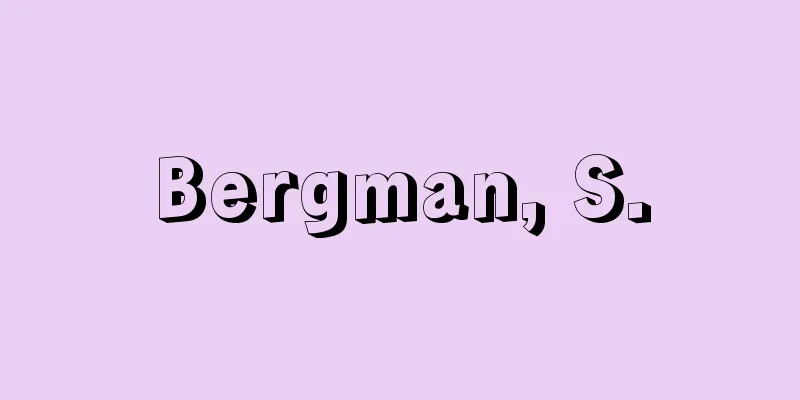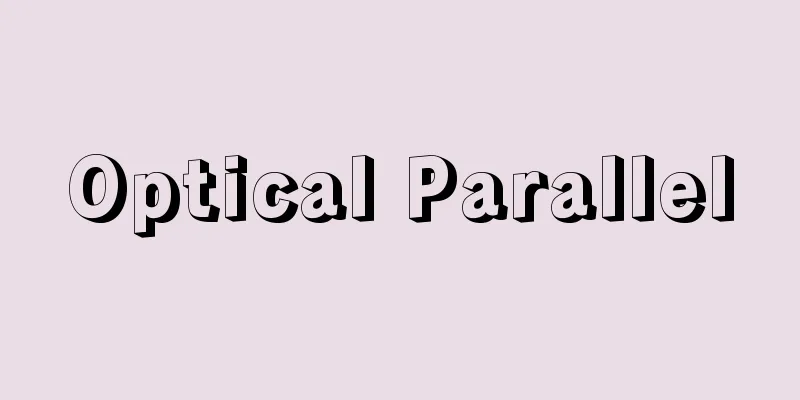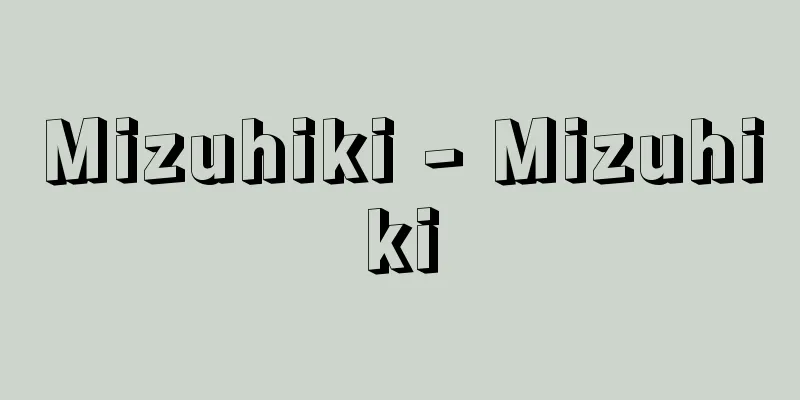Visual illusion
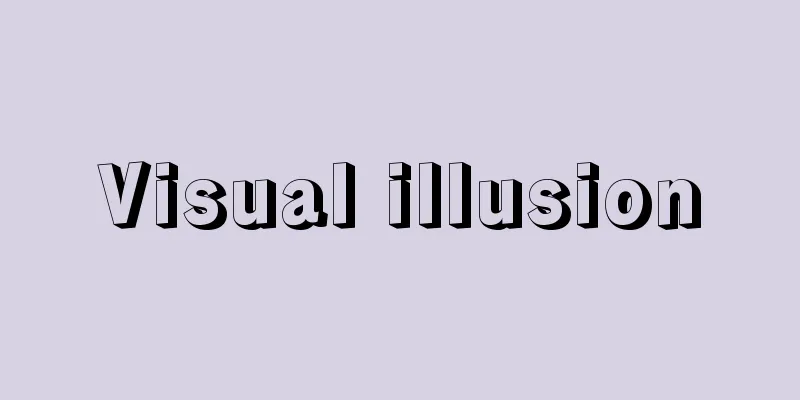
|
These are visual illusions, including illusions of brightness, color, size, length, shape, direction, depth, and motion. The majority of illusions are optical illusions. Optical illusions are clearly visible when the stimulus is observed carefully, and when observed by someone who is familiar with it. In everyday life, there are many cases where there is a shift or distortion similar to an optical illusion, even if the amount is small. When the shift or distortion is noticeable, it is called an optical illusion. Optical illusions are not unusual phenomena but normal perception. Research into optical illusions is considered an effective means of exploring the general principles that govern all perception. Optical illusions can be classified into geometric illusions, ambiguous figure illusions, paradoxical figure illusions, moon illusions, contrast illusions, motion illusions, gradient illusions, and orientation illusions. [Shogo Imai] Geometric illusionThis is an optical illusion in which the geometric relationships of plane figures, such as size (length and area), direction, angles, and curves, appear to be at odds with the objective relationships measured with a ruler or straightedge. Many optical illusions are named after their discoverers or designers. These illusions can be conveniently classified as follows: (1) Angular direction illusion: In the Poggendorff figure, the diagonal lines appear to be shifted, and in the Zöllner figure, the vertical parallel lines appear to be tilted relative to each other. (2) Curvature illusion In the Wundt figure, two parallel lines are curved and appear to be like a concave lens. (3) Size illusions In the Müller-Lyer figure, the lengths of the lines between the arrows are the same, but the outer arrow condition is significantly overestimated compared to the inner arrow condition. In the Helmholtz square, the square divided equally by horizontal stripes appears to be a vertically elongated rectangle, while the square divided equally by vertical stripes appears to be a slightly wider rectangle. In the ring contrast figure, the left and right central circles are the same size, but the left circle is overestimated. In the Jastrow figure, the top and bottom circles are the same size, but the bottom one is overestimated. In the Ponzo cylinder, the three cylinders are the same size, but the farther cylinder is overestimated compared to the closer cylinder. The conditions and factors governing geometric illusions are diverse, making this phenomenon more complex than expected. At present, no plausible unified theory has been established to explain it. [Shogo Imai] Ambiguous figure illusionThe same figure can be seen in more than one way. Examples include reversible figures with both figure and ground (Rubin's cup and face) and reversible perspective figures (Necker's cube). [Shogo Imai] Paradoxical figure illusionContradistinctive figures, impossible figures. Like the Penrose triangle, these are figures that can be interpreted by looking at parts of them in terms of depth characteristics shown on a two-dimensional plane, but when perceived together, the overall form appears impossible in three dimensions. [Shogo Imai] "The Laws of Vision, by W. Metzger, translated by Morinaga Shiro (1968, Iwanami Shoten)" ▽ "The Mechanism of Seeing: The Physiology of the Eye and Brain, by R. L. Gregory, translated by Funahara Yoshinori (1970, Heibonsha)" ▽ "The Intelligent Eye: The Science of Seeing, by R. L. Gregory, translated by Kaneko Takayoshi (1972, Misuzu Shobo)" ▽ "Handbook of Sensory Perception Psychology, edited by Wada Yohei, Oyama Tadashi, and Imai Shogo (1969, Seishin Shobo)" ▽ "Optical Illusions: The Psychology of Appearance, by Imai Shogo (1984, Science-sha)" [Reference] | |Angular direction illusion © Katsuya Nishikawa "> Poggendorff figures Angular direction illusion © Katsuya Nishikawa "> Zöllner diagram Curvature illusion © Katsuya Nishikawa "> Bundt figures Size illusion © Katsuya Nishikawa "> Muller-Lyer diagram Size illusion © Katsuya Nishikawa "> Helmholtz Square Size illusion © Katsuya Nishikawa "> Circular contrast figure Size illusion © Katsuya Nishikawa "> Jastrow figure Size illusion © Katsuya Nishikawa "> Ponzo Cylinder ©Shogakukan "> Rubin's Cup and Face ©Katsuya Nishikawa "> Penrose triangle Source: Shogakukan Encyclopedia Nipponica About Encyclopedia Nipponica Information | Legend |
|
視覚による錯覚のことで、明るさ、色、大きさ、長さ、形、方向、奥行、運動の錯視がある。錯覚の大部分は錯視である。錯視は、刺激を注意深く観察しても、またそれを熟知する人が観察しても明確に生じる。日常生活において、分量は小さくても、錯視と同様のずれや歪(ゆが)みを生じている場合が多いが、そのずれや歪みが顕著に生じる場合を錯視という。 錯視はなんら特殊な異常な現象でなく、正常な知覚である。錯視の研究は、知覚全般を支配する一般原理を探るための有効な手段と考えられている。 錯視を分類すると、幾何学的錯視、多義図形の錯視、逆理図形の錯視、月の錯視、対比錯視、運動の錯視、勾配(こうばい)の錯視、方向づけの錯視となる。 [今井省吾] 幾何学的錯視大きさ(長さ・面積)、方向、角度、曲線などの平面図形の幾何学的関係が、物差しや定規によって測った客観的関係と食い違って見られる錯視現象である。多くの錯視図形には、発見者や考案者の名がつけられている。この錯視を便宜的に分類すると次のとおりである。 (1)角度方向錯視 ポッゲンドルフPoggendorff図形では、斜線がずれ、ツェルネルZöllner図形では、縦の平行線が互いに傾いて見られる。 (2)湾曲錯視 ブントWundt図形では、2本の平行線が湾曲して凹レンズ状に見える。 (3)大きさの錯視 ミュラー・リヤーMüller-Lyer図形では、矢線に挟まれた直線の長さは同じであるが、外側矢線条件のほうが内側矢線条件に比べ著しく過大視される。ヘルムホルツHelmholtzの正方形では、横縞(よこじま)で等分割された正方形は縦に長い長方形に見え、縦縞で等分割された正方形はやや横に長い長方形に見える。円環対比図形では、円環内の中央の円は左右同じ大きさであるが、左の円のほうが過大視される。ジャストローJastrow図形では、上下同じであるが、下のほうが過大視される。ポンゾPonzo円筒では、三つの円筒の大きさは同じであるが、遠方の円筒のほうが手前の円筒よりも過大視される。 幾何学的錯視の規定条件や要因は多様であり、この錯視は予想以上に複雑な現象である。現在のところ、妥当な統一的説明理論は確立されていない。 [今井省吾] 多義図形による錯視同一図形で2種以上の見え方が可能なもの。図と地の反転図形(ルビンRubinの杯と顔)や、遠近の反転図形(ネッカーNeckerの立方体)などがある。 [今井省吾] 逆理図形による錯視矛盾図形、不可能図形。ペンローズPenroseの三角形のように、二次元的平面上に示される奥行の特徴を部分的に見れば解釈可能だが、まとめて知覚されると全体的形態は三次元的に不可能なように見られる図形である。 [今井省吾] 『W・メッツガー著、盛永四郎訳『視覚の法則』(1968・岩波書店)』▽『R・L・グレゴリー著、船原芳範訳『見るしくみ――目と脳の生理学』(1970・平凡社)』▽『R・L・グレゴリー著、金子隆芳訳『インテリジェント・アイ――見ることの科学』(1972・みすず書房)』▽『和田陽平・大山正・今井省吾編『感覚知覚心理学ハンドブック』(1969・誠信書房)』▽『今井省吾著『錯視図形――見え方の心理学』(1984・サイエンス社)』 [参照項目] | |角度方向錯視©西川勝也"> ポッゲンドルフ図形 角度方向錯視©西川勝也"> ツェルネル図形 湾曲錯視©西川勝也"> ブント図形 大きさの錯視©西川勝也"> ミュラー・リヤー図形 大きさの錯視©西川勝也"> ヘルムホルツの正方形 大きさの錯視©西川勝也"> 円環対比図形 大きさの錯視©西川勝也"> ジャストロー図形 大きさの錯視©西川勝也"> ポンゾ円筒 ©Shogakukan"> ルビンの杯と顔 ©西川勝也"> ペンローズの三角形 出典 小学館 日本大百科全書(ニッポニカ)日本大百科全書(ニッポニカ)について 情報 | 凡例 |
<<: Construction work - Sakuji
>>: Cellulose acetate butyrate
Recommend
《Grass Raft》 - Stinky raft
…In 1933, he handed over the family business to h...
Hannah Riddell
A British female missionary, she was a pioneer in...
A visit to a shrine - A visit to a shrine
A form of pilgrimage to Ise in the early modern pe...
Khārq (island) (English spelling)
An island in the Persian Gulf 55 km off the coast ...
《Omonguchi Yoroigasane》
...Tamenaga Tarobei took over as the lead playwri...
Announcement - Saikoku
A notice (notice of intention) that requests the ...
little grebe (English spelling) littlegrebe
...Five species are found in Japan, three of whic...
scombrine
…A general term for a group of water-soluble simp...
Smuts, Jan Christiaan (Christian)
Born: May 24, 1870, Riebeekwest [Died] September 1...
Crossbow -
A type of mechanical bow consisting of a bow, str...
Common channel signaling system
...This channel-associated signaling system is wi...
pretrial conference
...In the United States, as a rule, trials are co...
Honda Shigetsugu
Year of death: July 26, 1596 (August 19, 1596) Yea...
Giants - Giants
...Of these, Njörðr, Frey, and the goddess Freyja...
Emma
A character from the "Moomin" series by ...
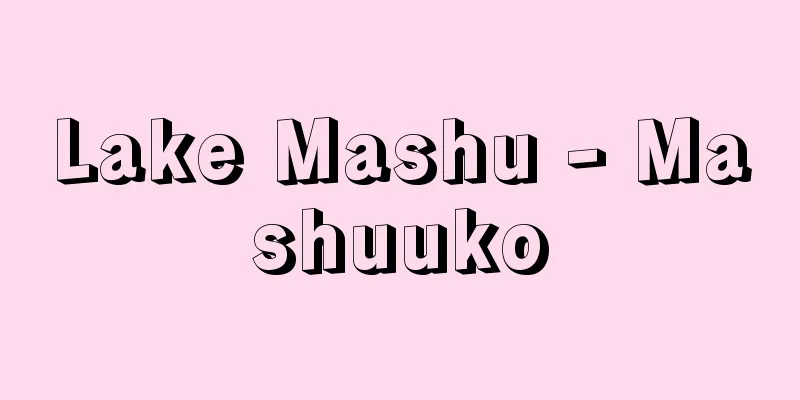
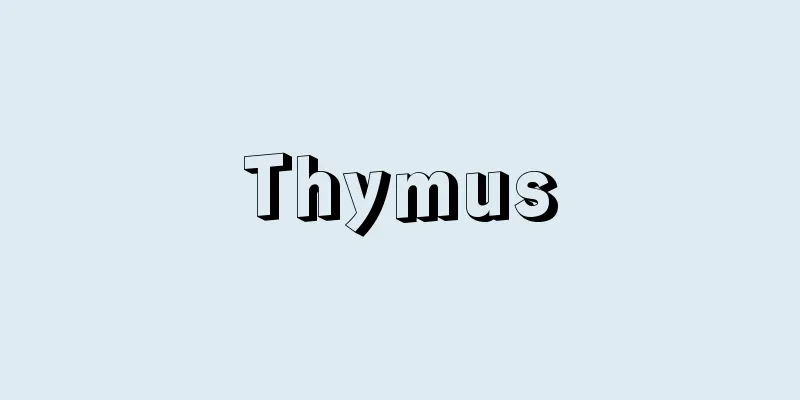
![Sanshu [village] - Samizu](/upload/images/67cbaecf4e8a1.webp)

